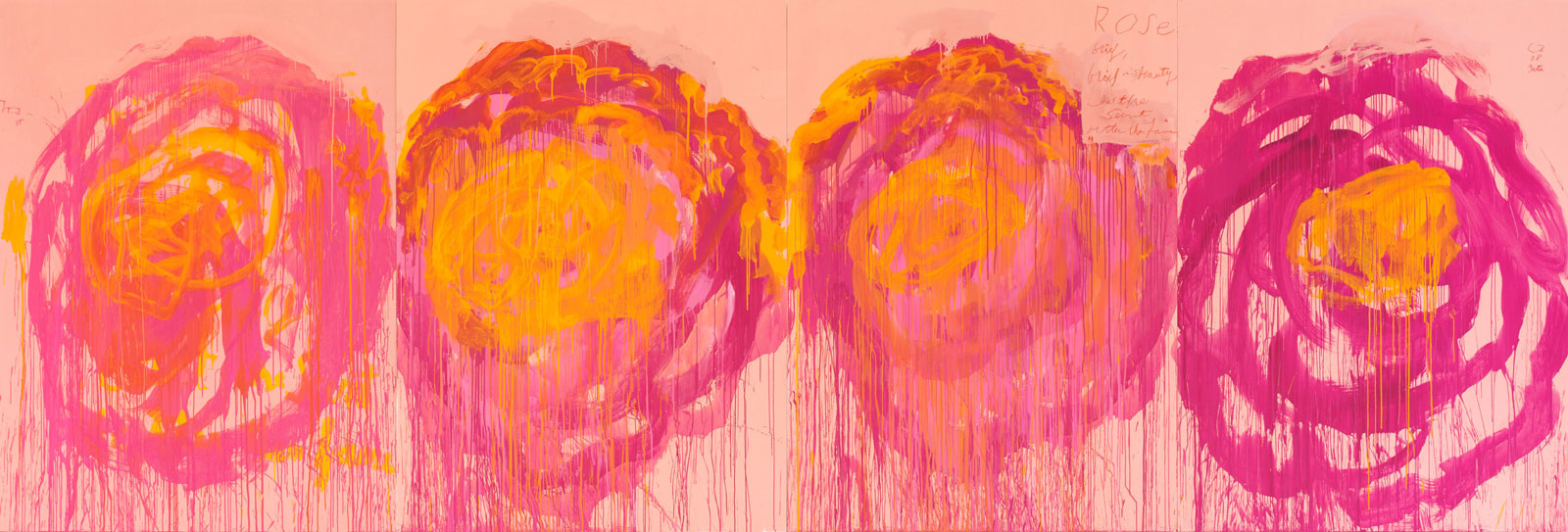PREVIEW: La Vie En Rose-Brueghel, Monet, Twombly
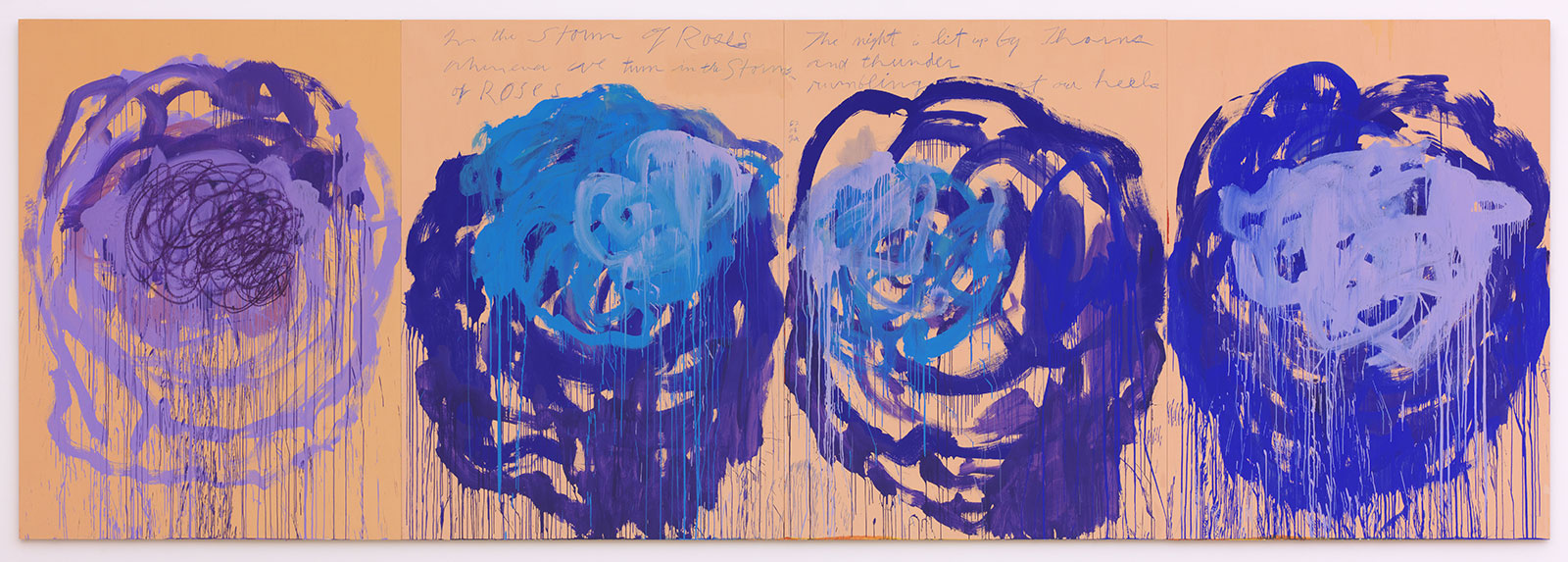 In 2008, Cy Twombly created a series of six paintings entitled “Untitled (Roses)” especially for Museum Brandhorst. Their presentation is unique due to the mutual effect and coordination between architecture and art. The large paintings depict a series of abstracted roses composed of overlapping planes and brushstrokes. In bold hues of red, pink, blue, yellow and green, countless streaks flow across the canvas, reinforcing the power and intensity of the motifs.
In 2008, Cy Twombly created a series of six paintings entitled “Untitled (Roses)” especially for Museum Brandhorst. Their presentation is unique due to the mutual effect and coordination between architecture and art. The large paintings depict a series of abstracted roses composed of overlapping planes and brushstrokes. In bold hues of red, pink, blue, yellow and green, countless streaks flow across the canvas, reinforcing the power and intensity of the motifs.
By Efi Michalarou
Photo: Museum Brandhorst Archive
In 1946, Edith Piaf first sang “La vie en rose” in front of an audience. The song tells how love, like a beloved person, makes the whole life appear in the color of roses. Piaf’s song expresses the overwhelming longing that after the war, after occupation, persecution and resistance, there will be happiness again, trust, closeness and devotion. The song “La vie en rose” is not only optimistic and love¬ drunk, but also permeated with a quiet melancholy, with the knowledge of the illusion and the end of every happiness, with the inevitability of grief, parting and loss. Museum Brandhorst is participating in Munich’s Flower Power Festival with an exhibition inspired by Cy Twombly’s “rose” paintings. Taking Twombly’s poetic examination of subjects including death, freedom, isolation, and eroticism as a basis, “La vie en rose. Brueghel, Monet, Twombly” brings together works by further artists including Jennifer Packer, Ellsworth Kelly, Georgia O’Keeffe, Gabriele Munter, and Claude Monet, who is represented by his famous “Water Lilies” (1915). The painting by Claude Monet, encounters the large rose motifs created by Cy Twombly in 2008. Monet’s late work became the impetus for abstract-gestural painting in the USA, from which Twombly in turn developed his artistic position. Monet created his water lily motifs in his studio in Giverny, in the midst of his inspiring garden. Twombly’s rose paintings were created in his studio in Gaeta, Italy, overlooking the sea and its colors. What memories are contained in the motifs and their realization, and what do we remember when we look at these paintings? This bouquet of works from the Bayerische Staatsgemaldesammlungen and external loans reveals the complex, even contradictory motives of numerous artists over the centuries in engaging with floral subjects. The exhibition “La vie en rose” explores this ambiguity of colors and feelings in painting. Flowers and blossoms are a preferred subject for this in art. They symbolize the overwhelming and mysterious beauty of nature. At the same time, they are charged with poetry and meanings and can express emotions and fantasies without having to say a word, and the variety of their forms challenges the creativity and virtuosity of the artists. At the center of the exhibition is Cy Twombly’s “rose” cycle, created in 2008. Twombly created the series “Untitled /Roses/” specifically for a gallery in the museum, where it has been on show since its opening in 2009. In six monumental paintings, the artist plays through some themes of the classical flower symbolism and provides them with fragments of poems: memory and longing [blue roses]. death and grief [purple roses]. sensuality and eroticism [pink roses]. joie de vivre and salvation [red-green roses), freedom and loneliness [yellow roses). These paintings and themes are accompanied by historical and contemporary loans from the Alte and Neue Pinakothek, the Stadtische Galerie im Lenbachhaus and Kunstbau Munchen, the Staatliche Graphische Sammlung Munchen, the Neues Museum – Staatliches Museum fur Kunst und Design Nurnberg as well as private lenders who take up, vary and interpret the themes.
Photo: Cy Twombly, Untitled (Roses), 2008, 4 parts; acrylic and crayon on wood, 252.5 x 742.9 cm, Udo und Anette Brandhorst Collection, © Cy Twombly Foundation, Photo: Nicole Wilhelms, Bayerische Staatsgemäldesammlungen, Museum Brandhorst, Munich
Info: Curator: Achim Hochdorfer, Theresienstrarle 35 A, Munich, Germany, Duration: 5/5-22/10/2023, Days & Hours: Tue-Wed & Fri-Sun 10:00-18:00, Thu 10:00-20:00, www.museum-brandhorst.de/
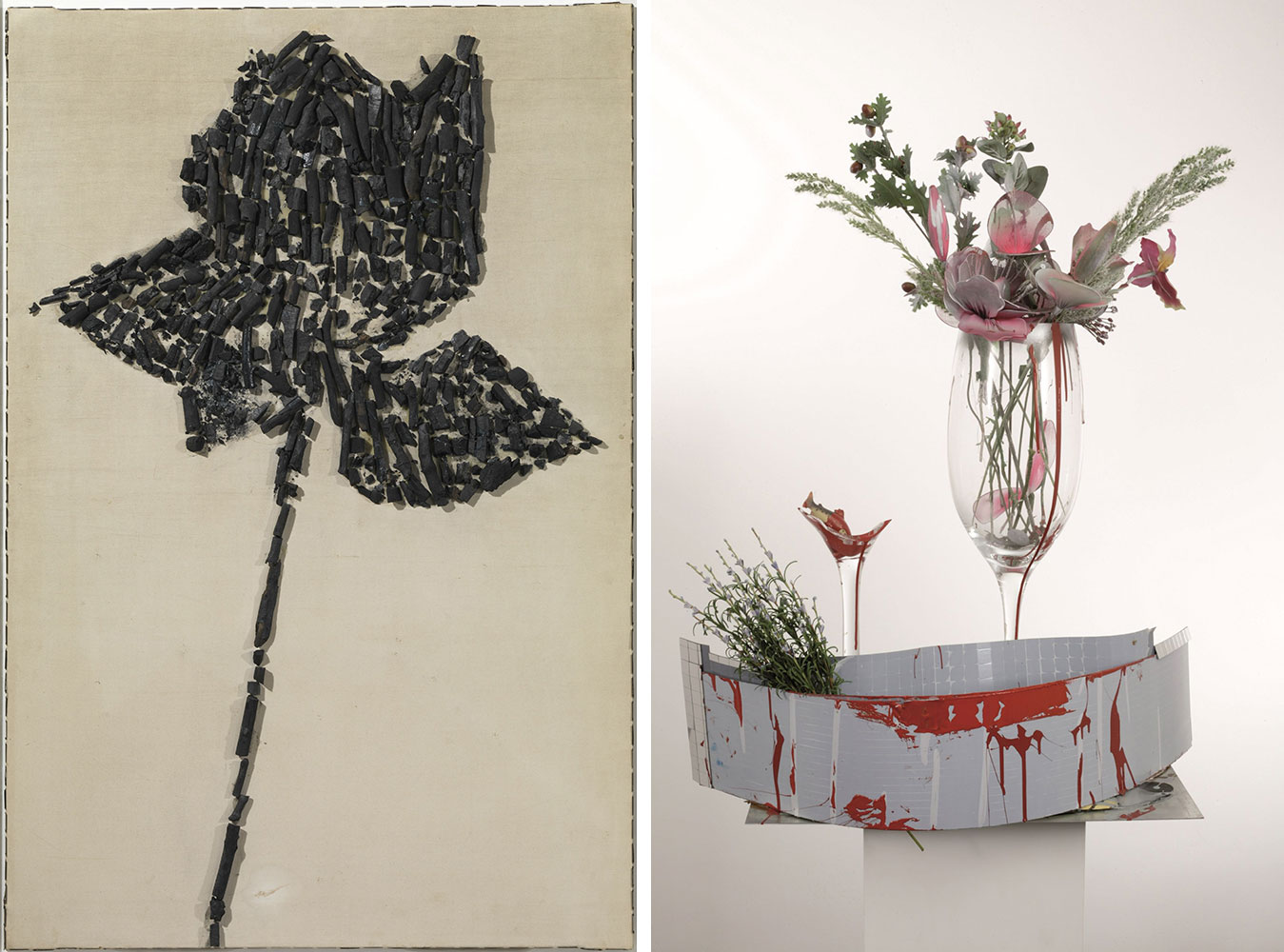
Right: Isa Genzken, empire vampire V, 2003, Object dimensions 96.5 cm x 73 cm x 55 cm / Total dimension of object and base: 234.5 cm x 73 cm x 55 cm,Aluminium plate, glass, self-adhesive mirror films, various materials; white sprayed MDF base, Städtische Galerie im Lenbachhaus and Kunstbau Munich, acquired with funds from the Jubilee Foundation of Deutsche Bank AG Munich on behalf of the Lenbachhaus, Photo: Lenbachhaus, © VG Bild-Kunst, Bonn 2023
![Cy Twombly, Untitled (Roses) [detail], 2008,4 parts; acrylic and crayon on wood, 252.5 x 742.9 cm, Udo und Anette Brandhorst Collection, © Cy Twombly Foundation Photo: Nicole Wilhelms, Bayerische Staatsgemäldesammlungen, Museum Brandhorst, Munich](http://www.dreamideamachine.com/web/wp-content/uploads/2023/05/02-4.jpg)

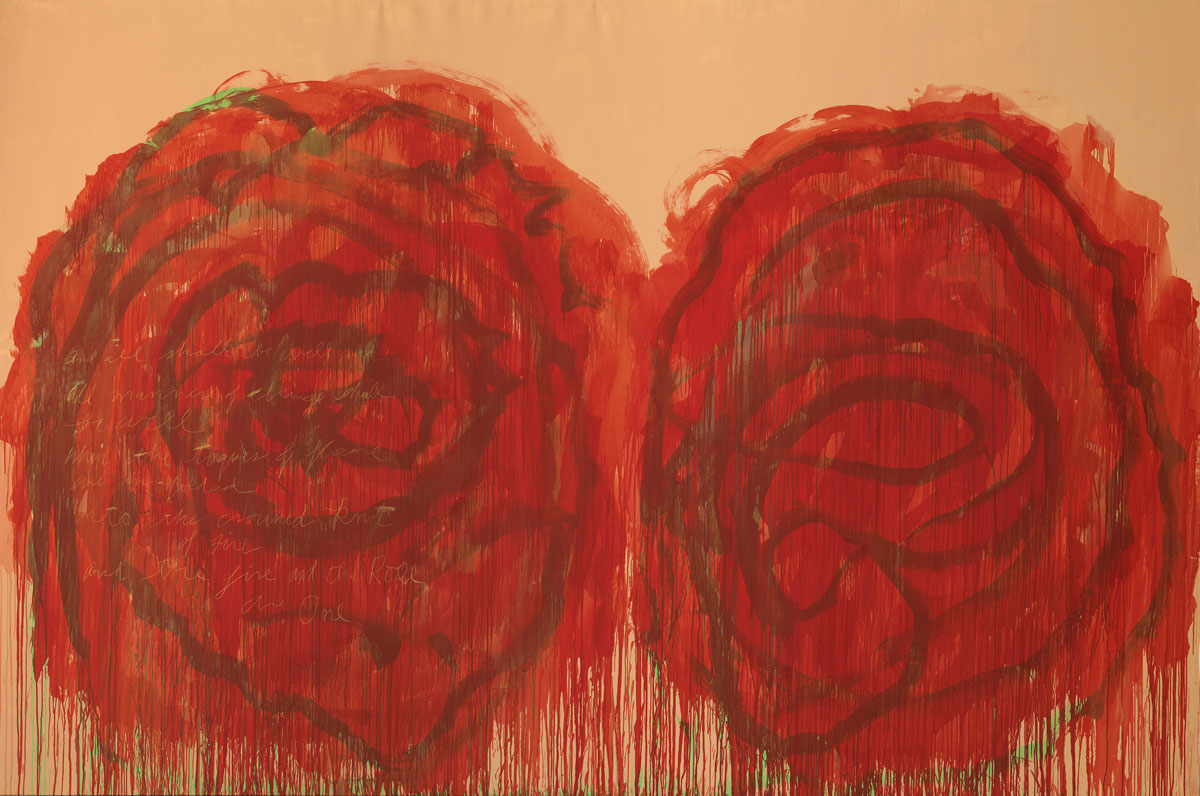
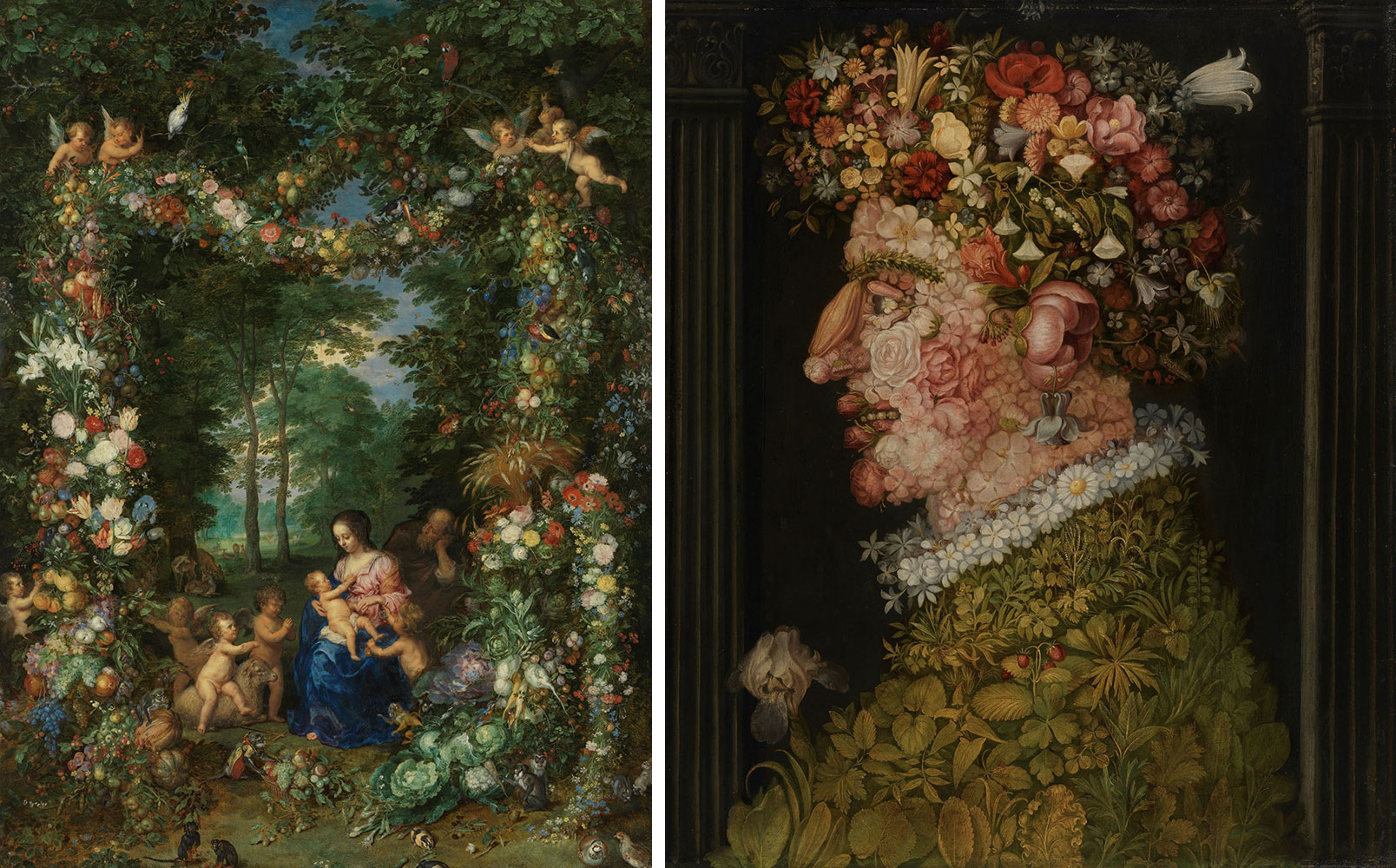
Right: Giuseppe Arcimboldo, Allegorie des Frühlings, 1563, Oil on wood panel, 68 x 57 cm, Bayerische Staatsgemäldesammlungen, Alte Pinakothek, Munich, Photo: Sibylle Forster, Bayerische Staatsgemäldesammlungen, Munich
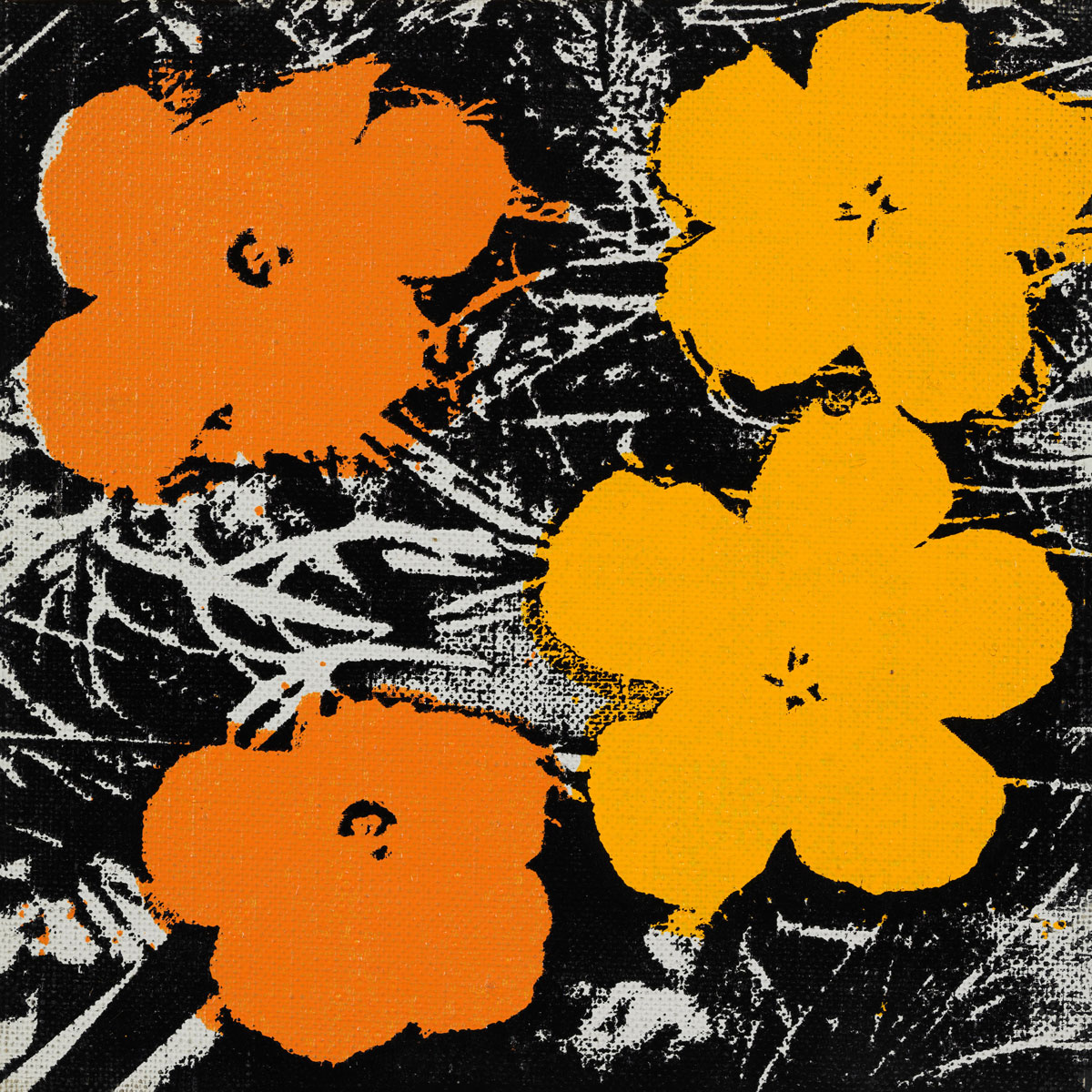
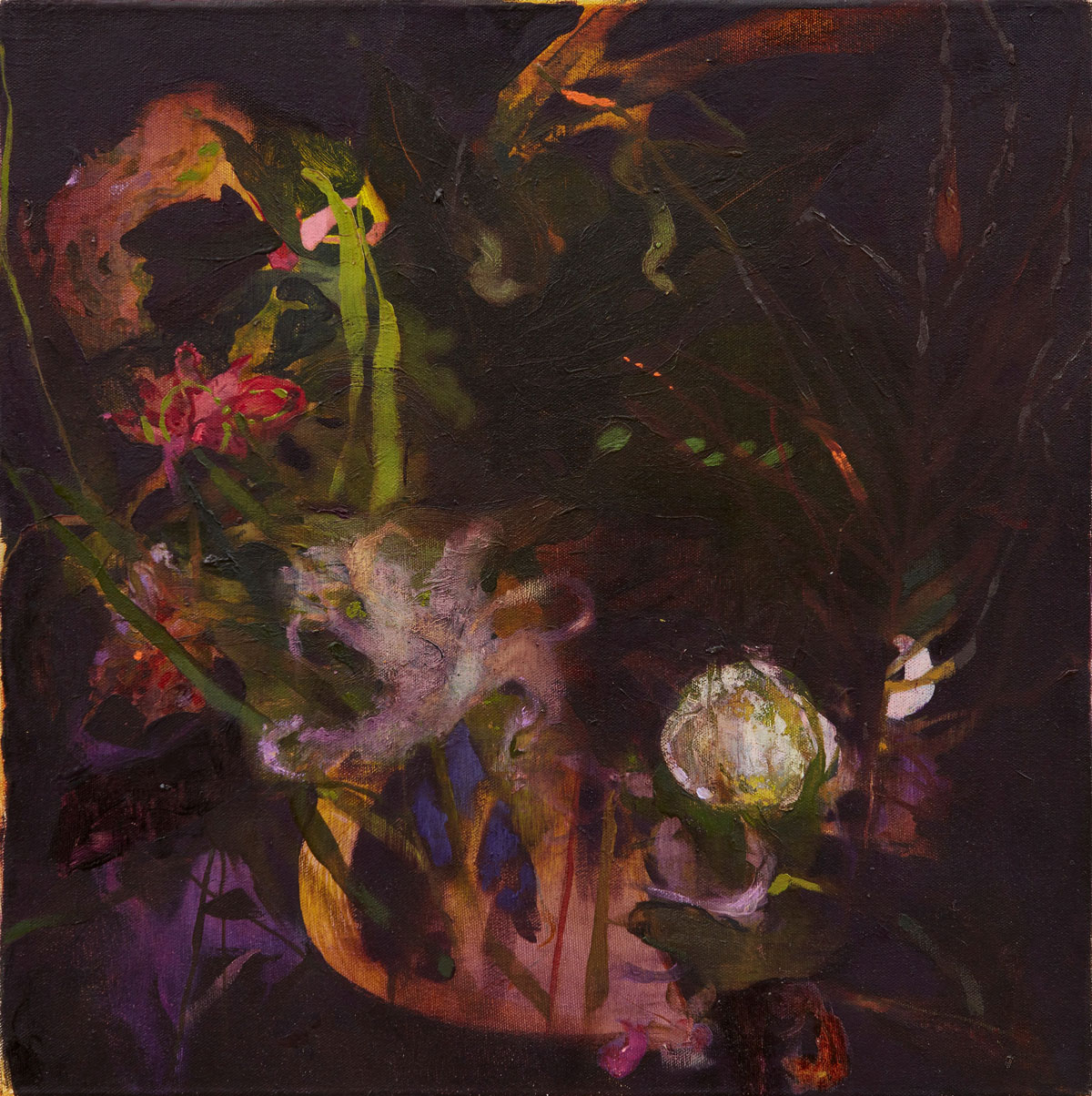
![Left: Cy Twombly, Untitled (Roses) [detail], 2008,4 parts; acrylic and crayon on wood, 252.5 x 742.9 cm, Udo und Anette Brandhorst Collection, © Cy Twombly Foundation Photo: Nicole Wilhelms, Bayerische Staatsgemäldesammlungen, Museum Brandhorst, MunichRight: Georgia O'Keeffe, Series I, No. 8, 1919, Oil on canvas, Picture 51,2 cm x 41 cm x 2,1 cm / Frame 54.5 x 44.5 x 5.5 cm, © VG Bild-Kunst, Bonn 2023. Städtische Galerie im Lenbachhaus und Kunstbau Munich](http://www.dreamideamachine.com/web/wp-content/uploads/2023/05/08a-1.jpg)
Right: Georgia O’Keeffe, Series I, No. 8, 1919, Oil on canvas, Picture 51,2 cm x 41 cm x 2,1 cm / Frame 54.5 x 44.5 x 5.5 cm, © VG Bild-Kunst, Bonn 2023. Städtische Galerie im Lenbachhaus und Kunstbau Munich
